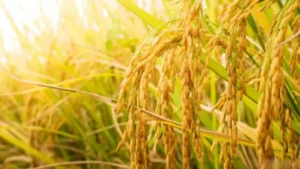In recent years, there has been a resurgence of interest in millets due to their nutritional value, resilience to harsh climates, and environmentally sustainable cultivation practices. As the world embraces healthier dietary choices and sustainable agriculture, millets have emerged as a staple crop in many regions. Let’s explore the top 10 millets producing countries in the world in 2024.
What is Millet?
Millet refers to a group of small-seeded grains widely cultivated and consumed around the world. These grains are valued for their nutritional richness, gluten-free nature, and resilience to adverse growing conditions. Common types of millet include pearl millet, finger millet, sorghum, foxtail millet, and proso millet. Millets are a staple food in many regions, offering a source of carbohydrates, proteins, fiber, vitamins, and minerals in diverse diets.
Worldwide Production of Millet
Millet is a significant crop across the arid regions of Africa, particularly surrounding the Sahara Desert, due to its high drought tolerance. In areas with optimal soil fertility and moisture, millet yields are notably higher. Countries, especially those less developed, often exchange millet varieties to enhance yields. India leads global millet production, although its domestic consumption has declined since the 1970s. Despite efforts to promote millet consumption, it’s increasingly used for fodder and alcohol production. France hosts some of the world’s most productive millet farms.
Largest Millet Producing Country in the World 2024
India stands as the world’s largest producer of millet, yielding a staggering 10,910,000 tons annually. Millet holds a crucial place in Indian cuisine, reflecting the nation’s diverse culinary heritage. India’s varied agro-climatic zones facilitate millet cultivation, ensuring consistent productivity. Rajasthan emerges as a key contributor, producing 27% of India’s millet despite its arid landscape. Bajra and Pearl Millet are prominent varieties nurtured by Rajasthan’s resilient rural communities. This underscores the state’s role in sustaining millet farming, showcasing a blend of traditional wisdom and modern agricultural practices to combat challenges like water scarcity and climate change.
Top-10 Millets Producing Countries in the World 2024
India with the millet production of 10,910,000 tons, stands as the largest millet producing country in the world, followed by Nigeria, Niger, China and Mali.
Here is the list of top-10 millet producing countries in the world 2024:
| Top-10 Millet Producing Countries in the World 2024 | ||
| Rank | Country | Millet Production (in tons) |
| 1. | India | 10,901,000 |
| 2. | Nigeria | 5,000,000 |
| 3. | Niger | 2,955,000 |
| 4. | China | 1,620,000 |
| 5. | Mali | 1,152,331 |
| 6. | Burkina Faso | 1,109,000 |
| 7. | Sudan | 1,090,000 |
| 8. | Ethiopia | 807,056 |
| 9. | Chad | 582,000 |
| 10. | Senegal | 572,155 |
Largest Millet Producer in the World – India
Millets Production: 10,901,000 tons
India leads the world in millet production, yielding 10,910,000 tons annually. Millet is integral to Indian cuisine, with the country’s diverse agro-climatic zones facilitating its robust cultivation. Rajasthan emerges as a significant contributor, producing 27% of India’s millet despite its desert conditions. Bajra and Pearl Millet are key varieties cultivated by Rajasthan’s resilient rural communities. This highlights Rajasthan’s pivotal role in sustaining millet farming and showcasing sustainable agricultural practices amid challenging environments, offering solutions to water scarcity and climate change.
Second Largest Country in terms of Millet Production – Nigeria
Millet Production: 5,000,000 tons
Nigeria ranks second globally in millet production, yielding 5,000,000 tons annually. Millet serves as a staple carbohydrate in the diet of northern Nigerians, reflecting the country’s agricultural commitment and traditional crop focus. Nigeria’s emphasis on sustainable agriculture is evident in millet’s adaptability to various climates, ensuring reliable food sources. The nation’s dynamic agriculture sector has propelled it to the forefront of global millet production, despite fluctuations in output over the years.
World’s Third Largest Millets Producer – Niger
Millet Production: 2,955,000 tons
Niger ranks third globally in millet production, yielding 2,955,000 tons annually. Millet holds cultural and economic significance in Niger, integrated into traditional dishes and festivities. The country’s commitment to sustainable agriculture and millet’s drought tolerance contribute to its high yield. Niger’s deep cultural connection to millet is evident in its usage in daily life and rituals, preserving agricultural ecosystems and supporting global food security efforts despite the challenges of farming in arid conditions.




 What was the Old Name of Goa? Know About...
What was the Old Name of Goa? Know About...
 Top-10 Most Searched Words in 2025, Chec...
Top-10 Most Searched Words in 2025, Chec...
 Which Crop is known as the Backbone of I...
Which Crop is known as the Backbone of I...







